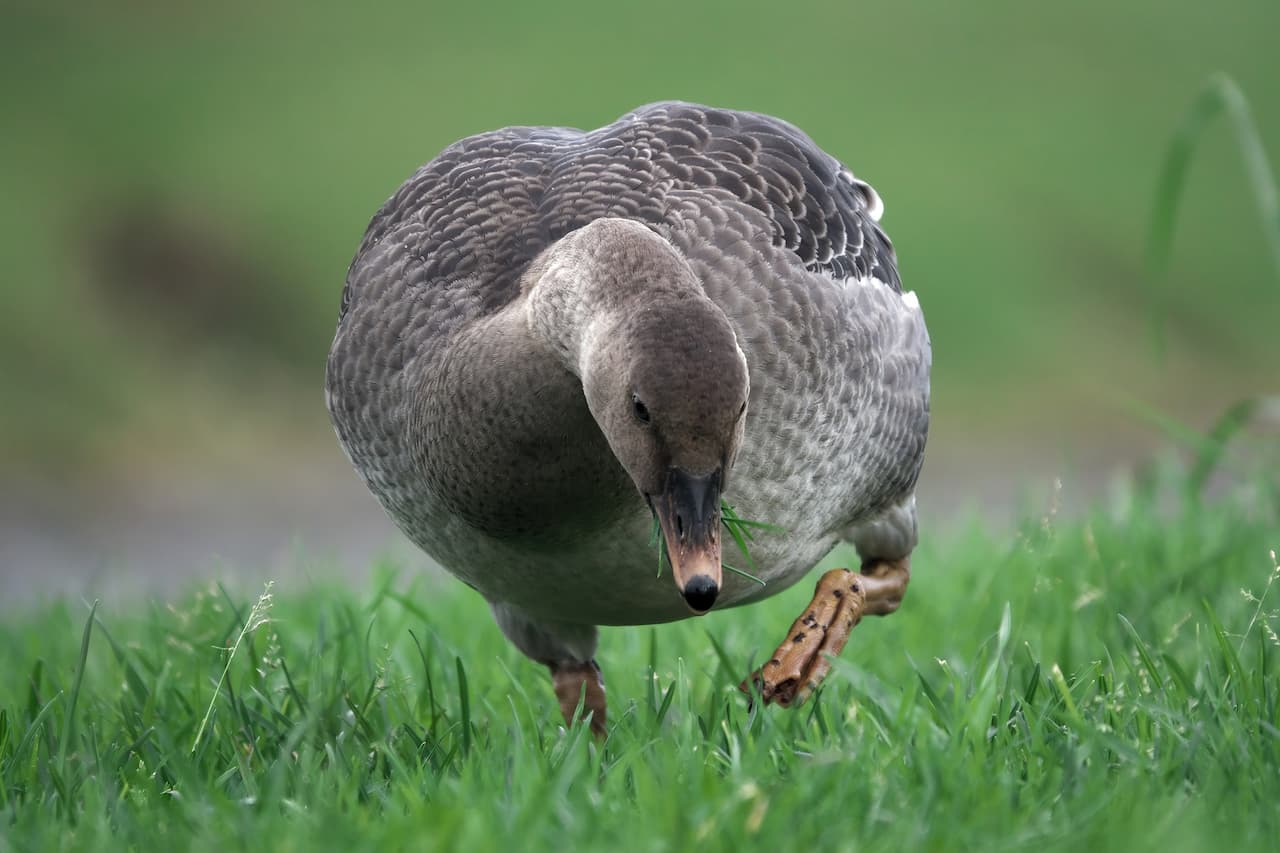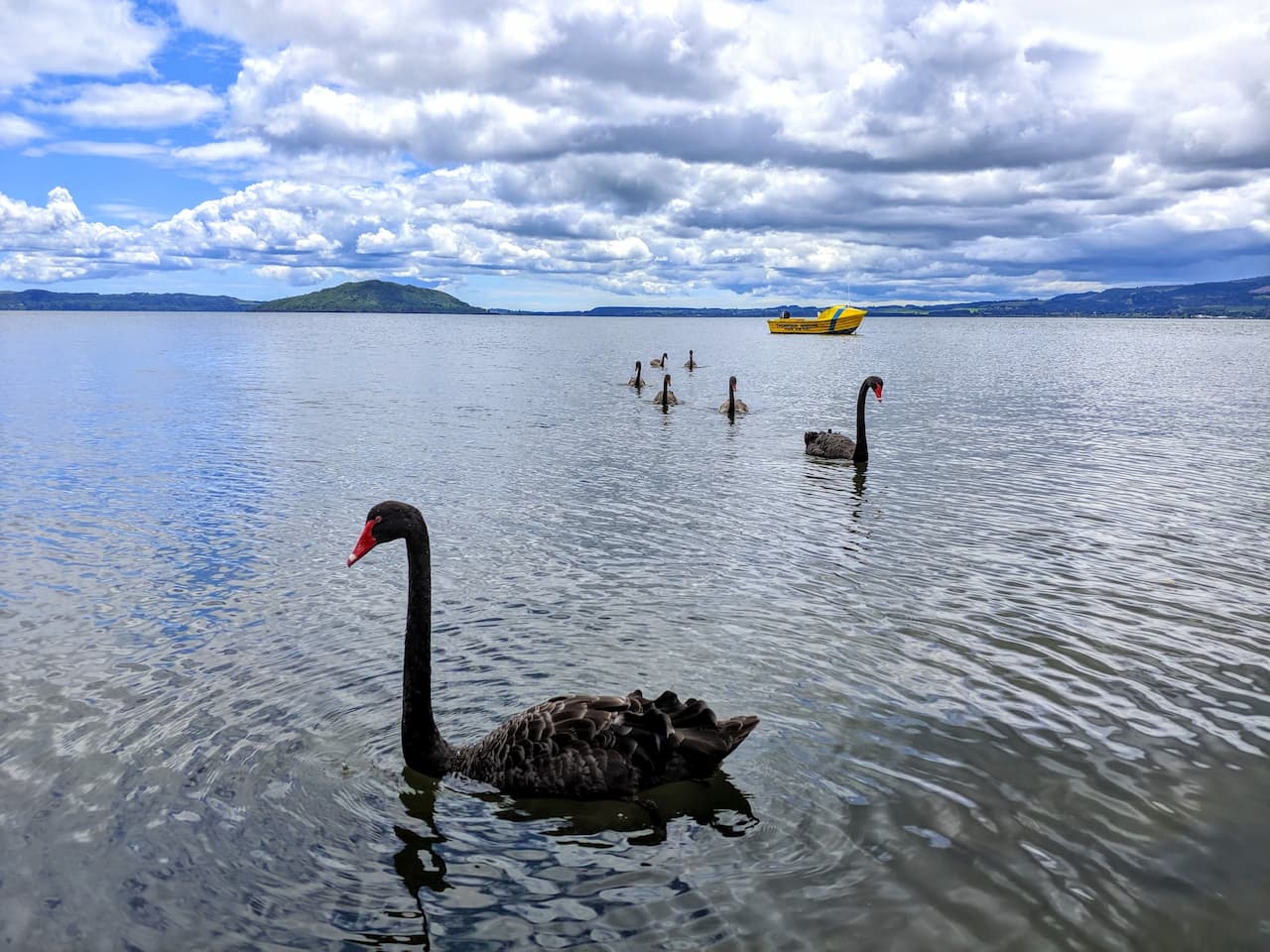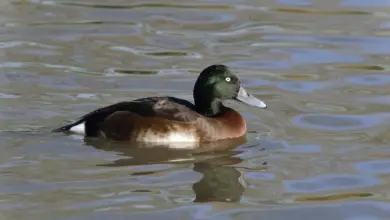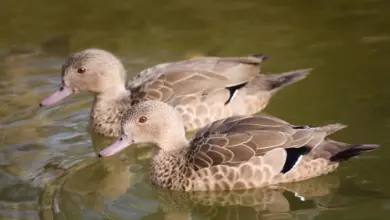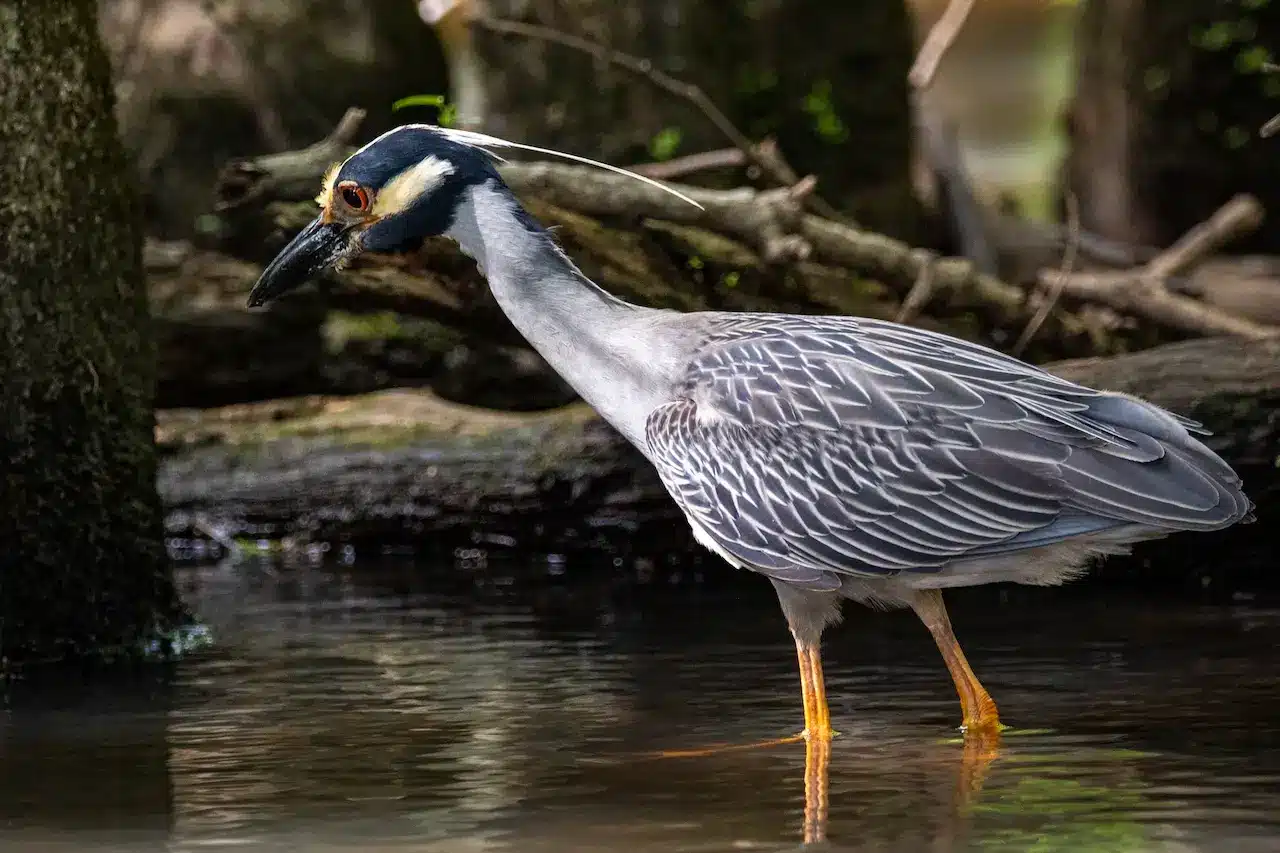True Geese are medium to large water birds with a nearly global distribution. However, the highest concentration is found in the Northern Hemisphere. True geese are medium to large birds.
The male is referred to as “gander,” the female as “goose,” and the chicks are called goslings.
A flock of geese on the ground is known as gaggleeese flying in the typical v-formation are referred to as “wedge” or skein.”
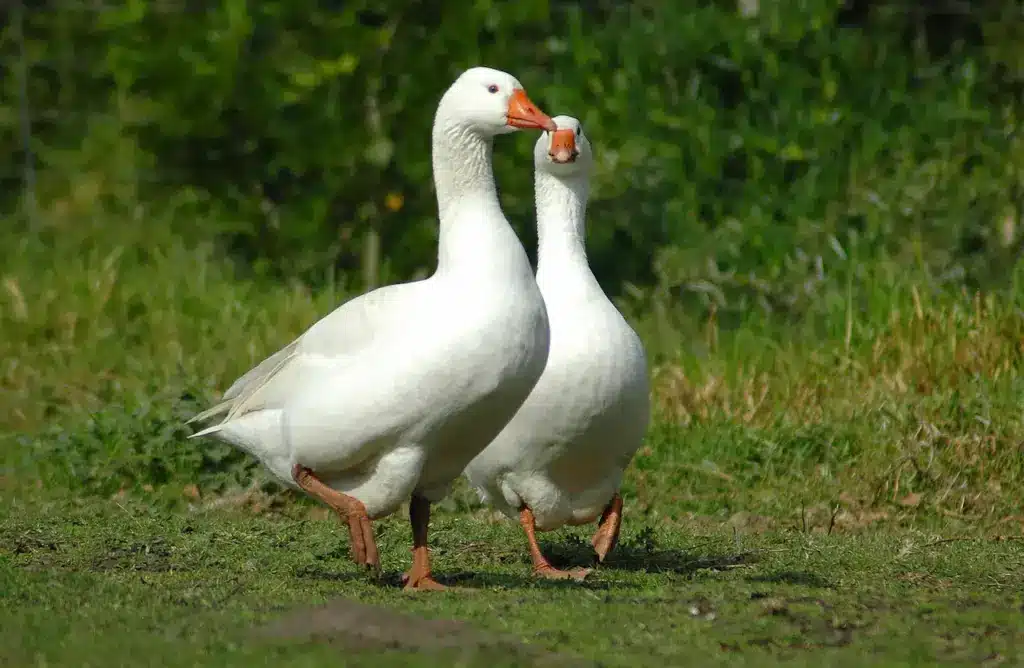
Alternate (Global) Names:
Arabic: ???? … Chinese: ? … Czech: Husa, Pennsylvania … Dutch: Ganzen … German: Gans, Gänse (plural) … Greek: ???? … French: Oie … Korean: ?? … Indonesian: Angsa berleher pendek … Italian: Oca (zoologia) … Hebrew: ???? … Haitian: Zwa … Malayalam: ????? … Japanese: ???? … Norwegian: Gås … Persian: ??? … Polish: G??ce … Portuguese: Ganso … Romanian: Gsc? … Serbian: ????? … Spanish: Anserinae … Swahili: Bata bukini … Swedish: Gäss …Turkish: Kaz.
Physical differences between ducks, swans and geese:
Sometimes, it is easy to confuse geese and the related ducks and swans, and the groupings are in some cases unclear and disputed. However, speaking in general terms, size is usually a method of identification: swans tend to be larger than true geese and ducks are usually smaller.
Swans have longer necks than geese, and geese have necks that are shorter than the body. Geese have longer necks than most duck species.
Distribution / Range
Geese occurring in Europe, Asia and North America are strongly migratory, with some of them breeding as far north as the Arctic Circle and migrating south for the winter. Although escapees from captive situations (meat farms, etc.) may form resident (non-migratory) local populations.
Geese are typically found in or close to rivers, ponds, lakes, and other bodies of water.
True Geese Genera
- Anser – Generally referred to as “grey geese“. This is somewhat misleading, as this group also includes white and brown geese – although the white geese are sometimes separated as the genus Chen, All have pink, orange or yellow bills and legs.
- Western Greylag Geese – Anser anser anser – Breed in Iceland, Scandinavia and Finland. Winter in the British Isles.
- Eastern Greylag Geese – Anser anser rubrirostris – Breed in South-east Europe, Asia Minor and USSR from the Urals east to Manchuria. Winter in North-west India, Burma and south China
- Bean Geese – Anser fabilis – Breed in northern Norway, northern Sweden and northern Finland. Winter in the British Isles, southern Scandinavia, Germany, the Netherlands south to the Mediterranean Sea.
- Taiga Bean-Goose Anser fabalis (nominate)Tundra Bean-Goose Anser serrirostris
- Pink-footed Geese– Anser brachyrhyncus – Breed in Spitsbergen, Greenland and Iceland. Winter in Scotland, England, Germany, the Netherlands and Belgium.
- Greater Snow Geese – Anser caerulescens atlanticus – Found in northeastern Canada
- Blue and White Lesser Snow Geese – Anser caerulescens caerulescens – Found in central northern Canada to the Bering Straits area
- Greater White-fronted Geese – Anser albifrons albifrons – Breed in the far north of Europe and Asia, and winters further south and west in Europe.
- Greenland White-fronted Goose Anser (albifrons) flavirostris
- Pacific Greater White-fronted Geese – Anser albifrons frontalis – Occur in the far east of Siberia east to Arctic Canada. Winter in United States and Japan.
- Tule Greater White-fronted Geese – Anser albifrons elgasi – Breed in southwest Alaska. Winter in California, USA.
- Lesser White-fronted Geese – Anser erythropus – Breed in northernmost Asia, rarely breed in Europe. Winter further south in Europe and occasionally Great Britain.
- Bar-headed Geese – Anser indicus – sometimes separated in Eulabeia. Native to Central Asia.

Disputed
- Swan Goose – Anser cygnoides – – sometimes separated in Chen. Breed in inland Mongolia, northernmost China, and southeastern Russia. Winter in central and eastern China. May visit Japan, Korea, Kazakhstan, Laos, coastal Siberia, Taiwan, Thailand and Uzbekistan.
- Ross’s Geese – Anser rossi – – sometimes separated in Chen. Breed south of Queen Maud Gulf and west of Hudson Bay. Winter in California, Texas and Louisiana, United States.
- Emperor Geese – Anser canagicus – sometimes separated in Chen or Philacte. Breed around the Bering Sea, mostly in Alaska, USA, but also in Kamchatka, Russia. Winter mostly in the Aleutian Islands located in the Northern Pacific Ocean westward from the Alaska Peninsula.
- Chen – White Geese (often included in Anser) – Breed on subarctic areas of North America and around the Bering Strait and migrate south in winter.
- Branta – Black Geese (which includes the Canada Goose) – Mostly occur in North America. Some winter as far south as Mexico.
Tentatively included are …
A couple of genera are currently included in the Anserinae; but may be closer to the shelducks or form a subfamily on their own.
- Cape Barren Goose – Cereopsis – Occur in southern Australia with a smaller population in Western Australia
- Cnemiornis – prehistoric New Zealand Geese
Other birds are sometimes referred to as “geese” (although more likely part of the shelduck family)
- Egyptian Goose, Alopochen aegyptiacus
- South American sheldgeese, genus Chloephaga
- ehistoric Madagascar Sheldgoose, Centrornis majori, the “Woodard”
Other birds called “geese” – but not likely to be “true geese”
- Orinoco Geese, Neochen jubata
- Blue-winged Geese, Cyanochen cyanopterus
- Spur-winged Geese, Plectropterus gambensis
- Pygmy Geese – genus Nettapus
- Magpie Goose, Anseranatidae
Yearly Molt
After the breeding season, Geese undergo a complete simultaneous replacement of all their flight feathers, leaving them unable to fly for about a month – until the new flight feathers have grown in.
During this time, they are particularly vulnerable to predation and prior to this molt, they typically move to a safe area near water with readily available food and an unobstructed view of predators or danger.
The first ones to undergo this molt are typically non-breeding juveniles, non-nesting adults, and adults whose nests have been destroyed (Smith, Craven, and Curtis, 1999).
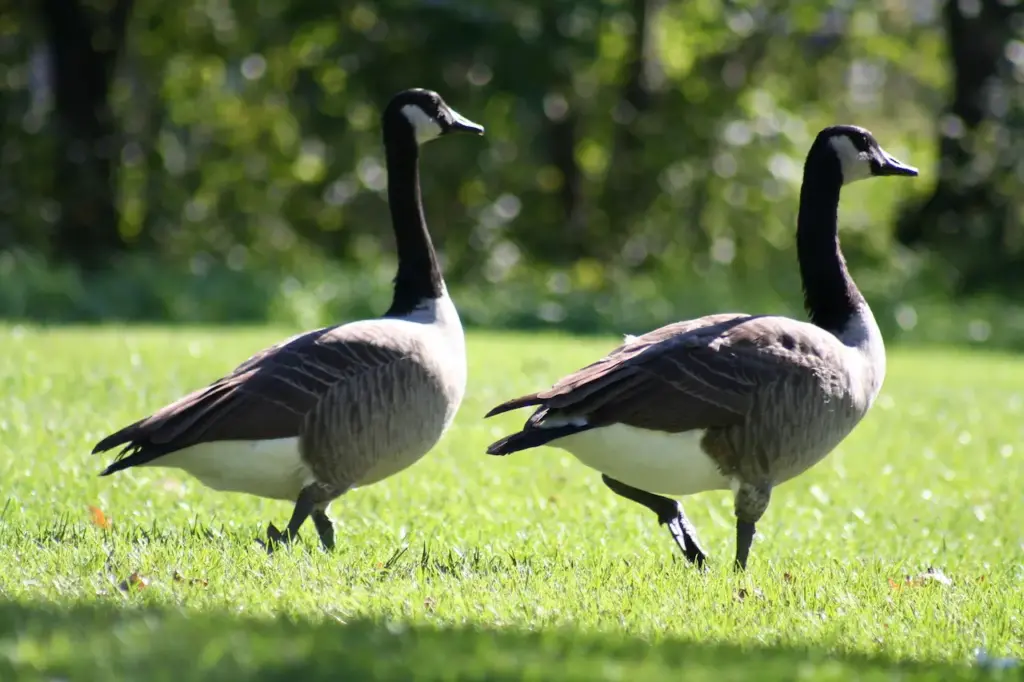
Breeding / Nesting
The monogamous geese live in permanent relationships throughout the year. During the nesting period, they aggressively defend their breeding territory; but outside this time, they are quite social.
Diet / Feeding
Geese consume a wide variety of plant material, including grass, roots, shoots, leaves, stems, seedheads, and fruits of other herbaceous marsh vegetation, aquatic plants, and agricultural grain and potatoes (particularly in the winter)
Feeding Ducks and Geese
We all enjoy waterfowl and many of us offer them food to encourage them to come over and stay around – and it works! Who doesn’t like an easy meal?
However, the foods that we traditionally feed them at local ponds are utterly unsuitable for them and are likely to cause health problems down the road. Also, there may be local laws against feeding this species of bird – so it’s best to check on that rather than facing consequences at a later stage.
- Foods that can be fed to Ducks, Geese and Swans to survive cold winters and remain healthy when food is scarce in their environment.
Please note that feeding ducks and geese makes them dependent on humans for food, which can result in starvation and possibly death when those feedings stop. If you decide to feed them, please limit the quantity to make sure that they maintain their natural ability to forage for food themselves – providing, of course, that natural food sources are available.

